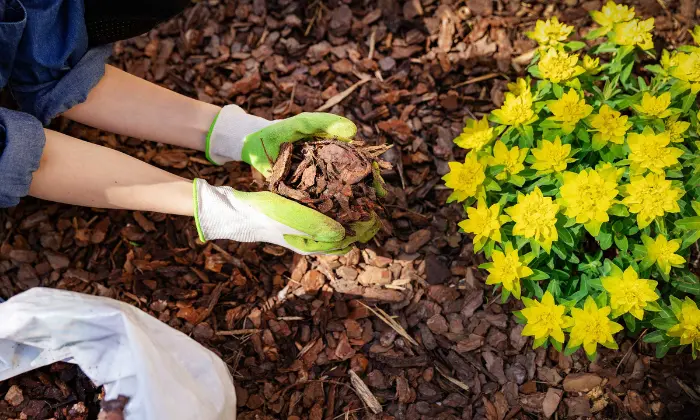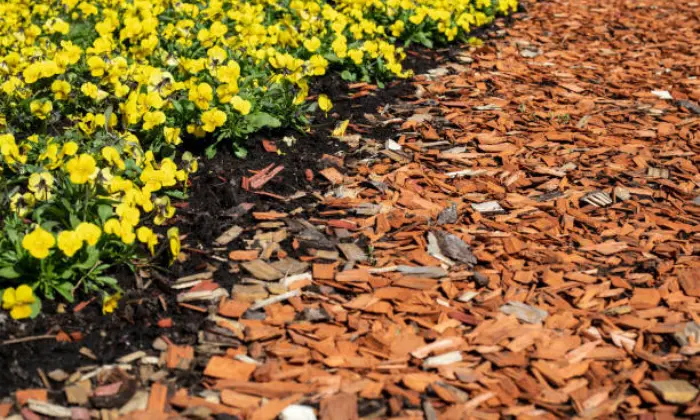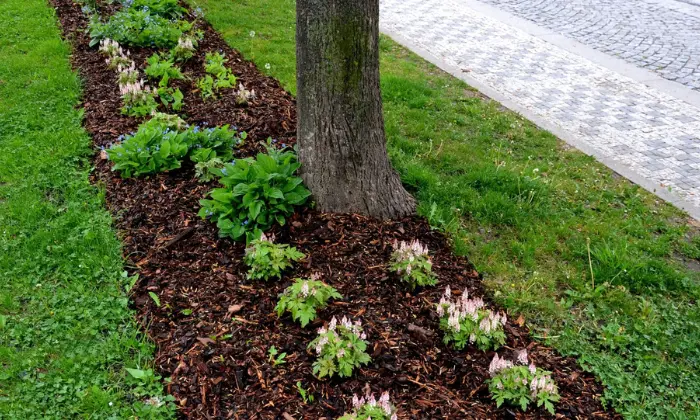Welcome to I Haul Landscape Services! Are you wondering, How thick should mulch be? Look no further for expert guidance on achieving the optimal mulch depth for your garden or landscape. Mulch thickness is crucial for weed prevention, moisture retention, and overall plant health. Our team of professionals is here to provide you with valuable insights and practical advice to ensure your mulching endeavors are successful. Let’s explore together how the right mulch thickness can transform your outdoor space into a thriving and beautiful environment.
Understanding the Importance of Mulch Thickness
Mulch serves as a protective barrier for the soil, helping to maintain moisture levels, regulate soil temperature, and suppress weed growth. The thickness of mulch plays a crucial role in determining its effectiveness in providing these benefits.
How Thick Should Mulch Be to Prevent Weeds?
Weeds can quickly overrun a garden if not properly controlled. One of the primary functions of mulch is to suppress weed growth by blocking sunlight from reaching weed seeds and preventing them from germinating. To achieve effective weed suppression, mulch should be applied at a sufficient thickness.
Ideally, mulch should be spread at a depth of 2 to 4 inches to effectively smother existing weeds and prevent new ones from emerging. Thicker mulch layers can further inhibit weed growth by creating a physical barrier that hinders weed seedlings from reaching the soil surface.
How Thick Should Mulch Be Spread?
When spreading mulch, it’s essential to achieve uniform coverage to ensure all areas of the soil are adequately protected. Mulch should be spread evenly across the surface of the soil, taking care not to pile it too thickly around plant stems or tree trunks, as this can lead to moisture retention and potential rotting.
Aim to spread mulch to the recommended depth of 2 to 4 inches, adjusting the thickness as needed to maintain consistency throughout the garden bed or landscape area.
How Thick Should Mulch Be in a Garden?

In garden beds where vegetables, herbs, or ornamental plants are grown, mulch should be applied at a depth of 2 to 4 inches. This thickness provides an optimal balance of moisture retention, weed suppression, and insulation without smothering plant roots or preventing air and water from reaching the soil.
When mulching around garden plants, take care to leave a small gap between the mulch and the base of the plants to prevent moisture-related issues and discourage pests and diseases.
How Thick Should Mulch Be in a Flower Bed?

Flower beds benefit greatly from the application of mulch, which helps retain soil moisture, regulate temperature, and enhance the overall appearance of the landscape. When mulching flower beds, aim for a thickness of 2 to 4 inches to provide adequate protection and support healthy plant growth.
Avoid piling mulch too close to the stems or crowns of flowers, as excessive moisture accumulation can promote rot and fungal diseases. Instead, spread the mulch evenly around the base of plants, leaving a small clearance to allow for air circulation.
How Thick Should Mulch Be Around Trees?

Mulching around trees offers numerous benefits, including moisture retention, weed suppression, and protection against temperature fluctuations. However, it’s crucial to apply mulch correctly to avoid smothering tree roots or causing other issues.
When mulching around trees, create a mulch ring with a diameter of at least 3 to 4 feet, extending from the base of the tree to the outer edge of the canopy (drip line). Mulch should be spread evenly within this area at a depth of 2 to 4 inches, taking care not to pile it against the trunk.
Additional Tips for Mulching Success
Mulch Maintenance:
Periodically check the mulch layer and replenish it as needed to maintain the desired thickness. Mulch may decompose over time, requiring topping up to ensure continued effectiveness.
Choose the Right Mulch:
Select mulch materials based on your specific needs and preferences, considering factors such as durability, aesthetics, and nutrient content. Common mulch options include wood chips, shredded bark, compost, and straw.
Watering Considerations:
When watering plants in mulched areas, adjust your watering practices to account for the moisture-retaining properties of the mulch. In some cases, you may need to water less frequently, as the mulch helps retain soil moisture.
Avoid Over-Mulching:
While mulch offers numerous benefits, excessive mulching can be detrimental to plant health. Avoid piling mulch too deeply, particularly around the base of plants or trees, as this can lead to moisture-related issues and root suffocation.
Monitor Soil Temperature:
Mulch helps regulate soil temperature by insulating the soil against extreme heat and cold. Regularly monitor soil temperature to ensure it remains within the optimal range for plant growth and health.
Conclusion
In conclusion, the question of How thick should mulch be? is crucial for maintaining a healthy garden or landscape. Adequate mulch thickness plays a significant role in providing benefits such as weed suppression, moisture retention, and soil insulation. By following the recommended guidelines of applying mulch at a depth of 2 to 4 inches, you can create an optimal environment for plant growth while minimizing weed growth and conserving soil moisture.
Regular maintenance and monitoring of the mulch layer are essential to ensure continued effectiveness and maximize the benefits it provides to your plants and soil. By choosing the right mulch materials and spreading them evenly, you can create a visually appealing landscape while promoting plant health and vitality.
FAQs
How Often Should I Replenish The Mulch Layer?
It’s recommended to replenish the mulch layer once or twice a year, typically in the spring and fall. This helps maintain the desired thickness and ensures continued effectiveness in weed suppression and moisture retention.
Can I Use Mulch That Is Thicker Than 4 Inches?
While a thicker mulch layer may offer additional weed suppression, it can also lead to moisture retention issues and potential root suffocation. It’s best to stick to the recommended thickness range of 2 to 4 inches to avoid these problems.
What Is The Best Mulch Material To Use?
The best mulch material depends on your specific needs and preferences. Common options include wood chips, shredded bark, compost, and straw. Consider factors such as durability, aesthetics, and nutrient content when choosing mulch for your garden or landscape.
Can Mulch Be Harmful To Plants If Applied Incorrectly?
Yes, mulch can be harmful if applied too thickly or piled against plant stems or tree trunks. This can lead to moisture-related issues, root suffocation, and pest or disease problems. It’s essential to spread mulch evenly and leave a small clearance around the base of plants to promote air circulation and prevent these problems.
How Can I Prevent Mold Or Fungal Growth In Mulch?
To prevent mold or fungal growth in mulch, avoid applying mulch too thickly and ensure proper air circulation around plants. Additionally, regularly turning or fluffing the mulch layer can help aerate it and prevent moisture buildup, reducing the risk of mold or fungal issues.

